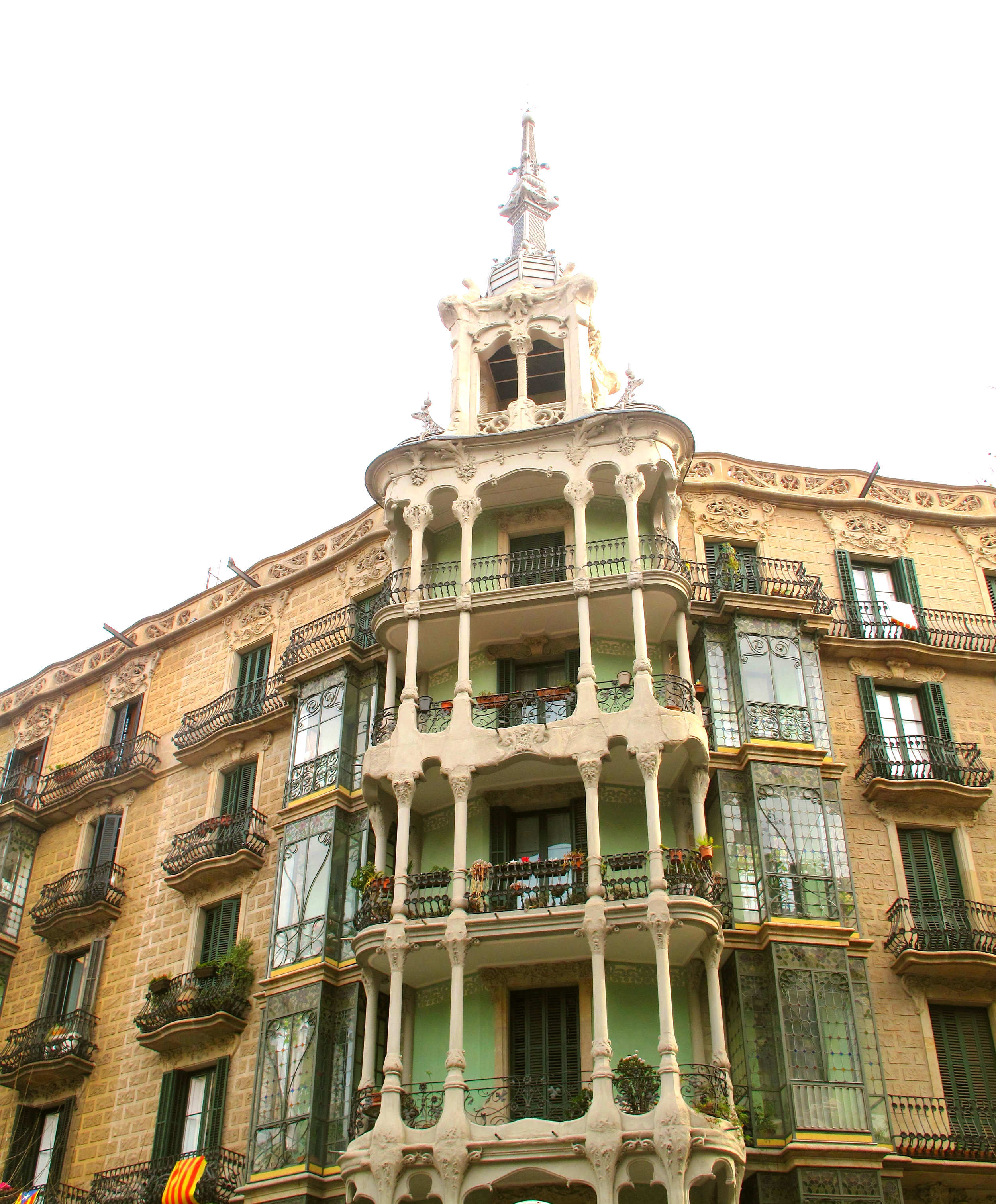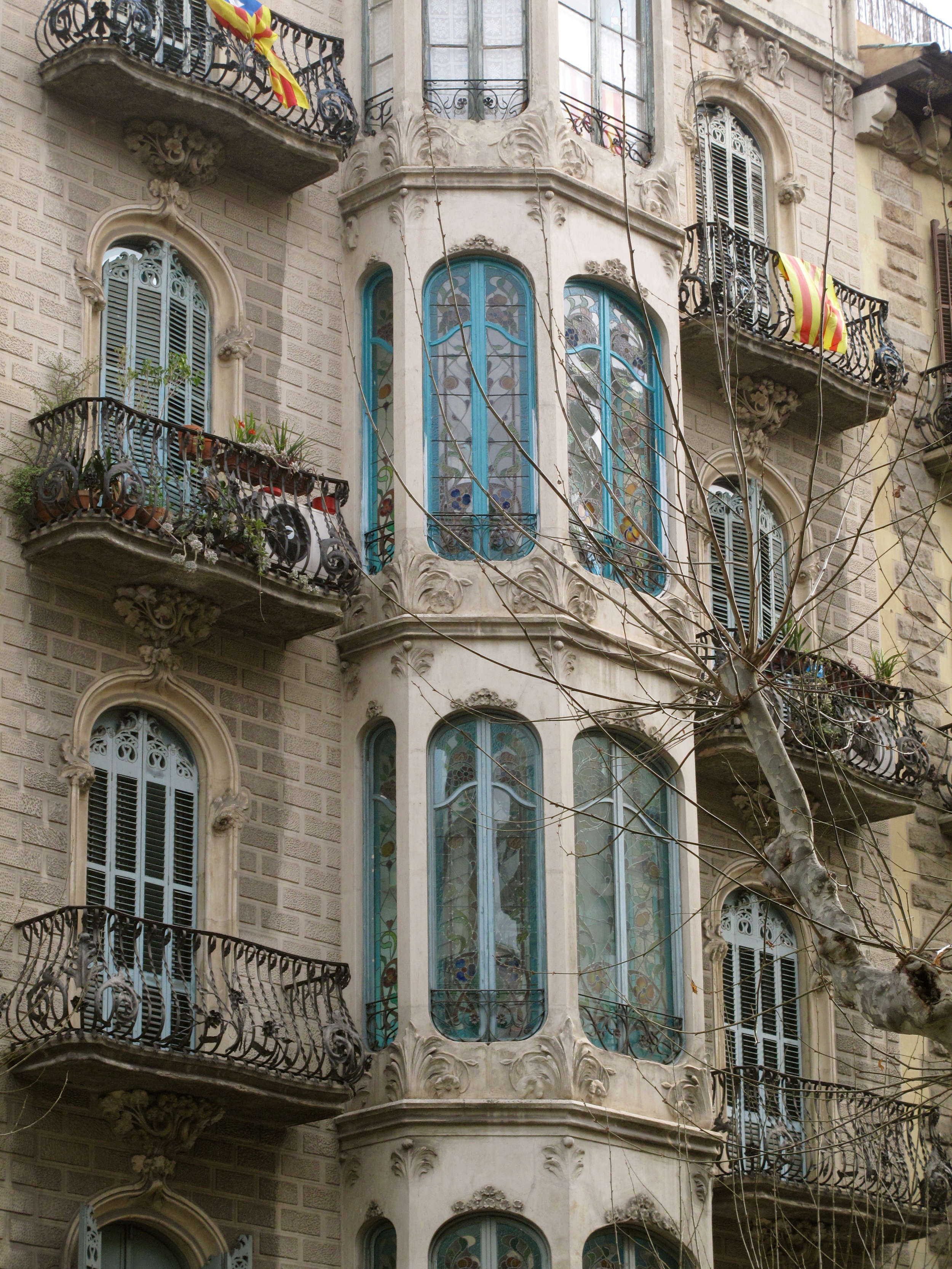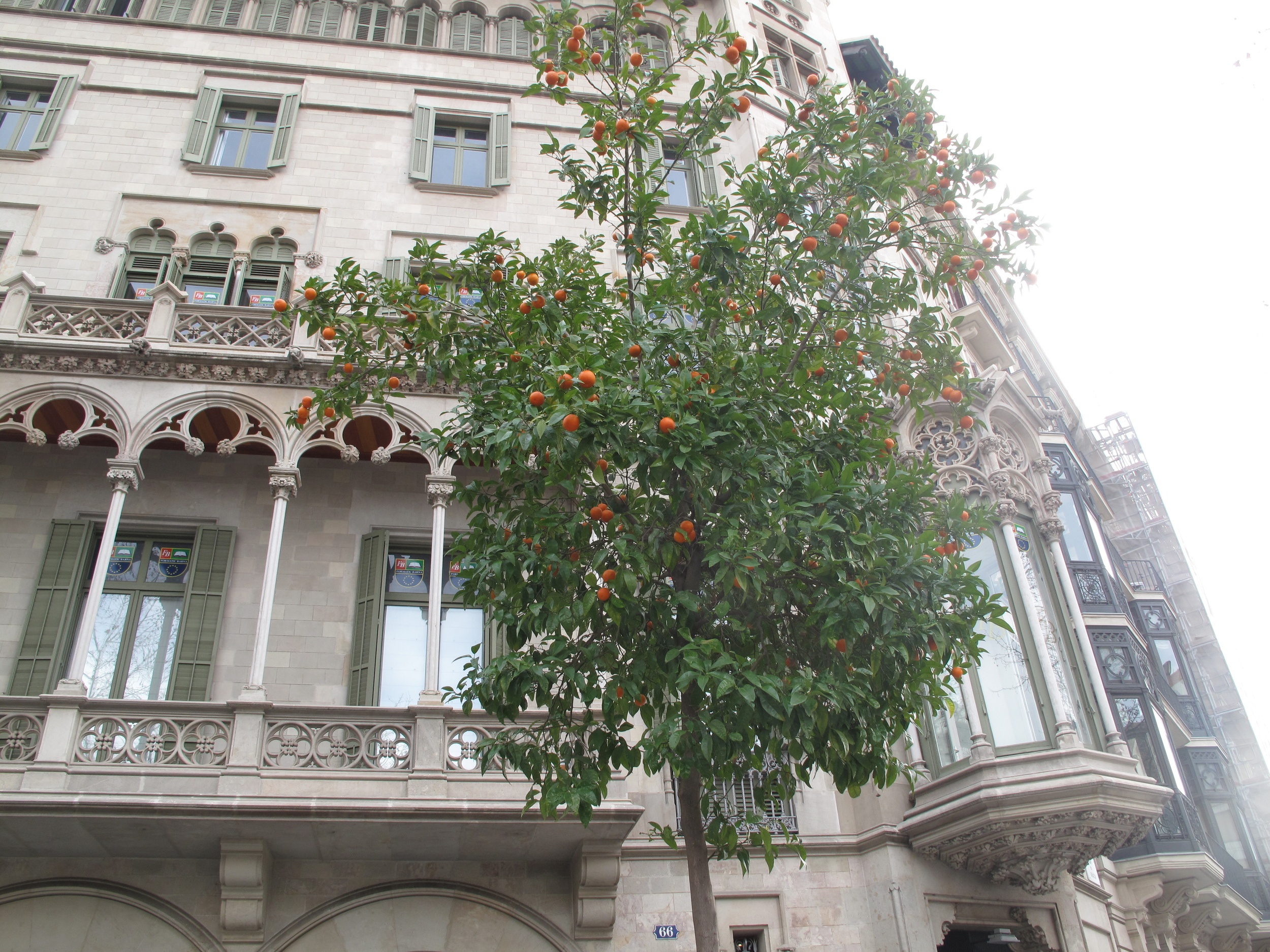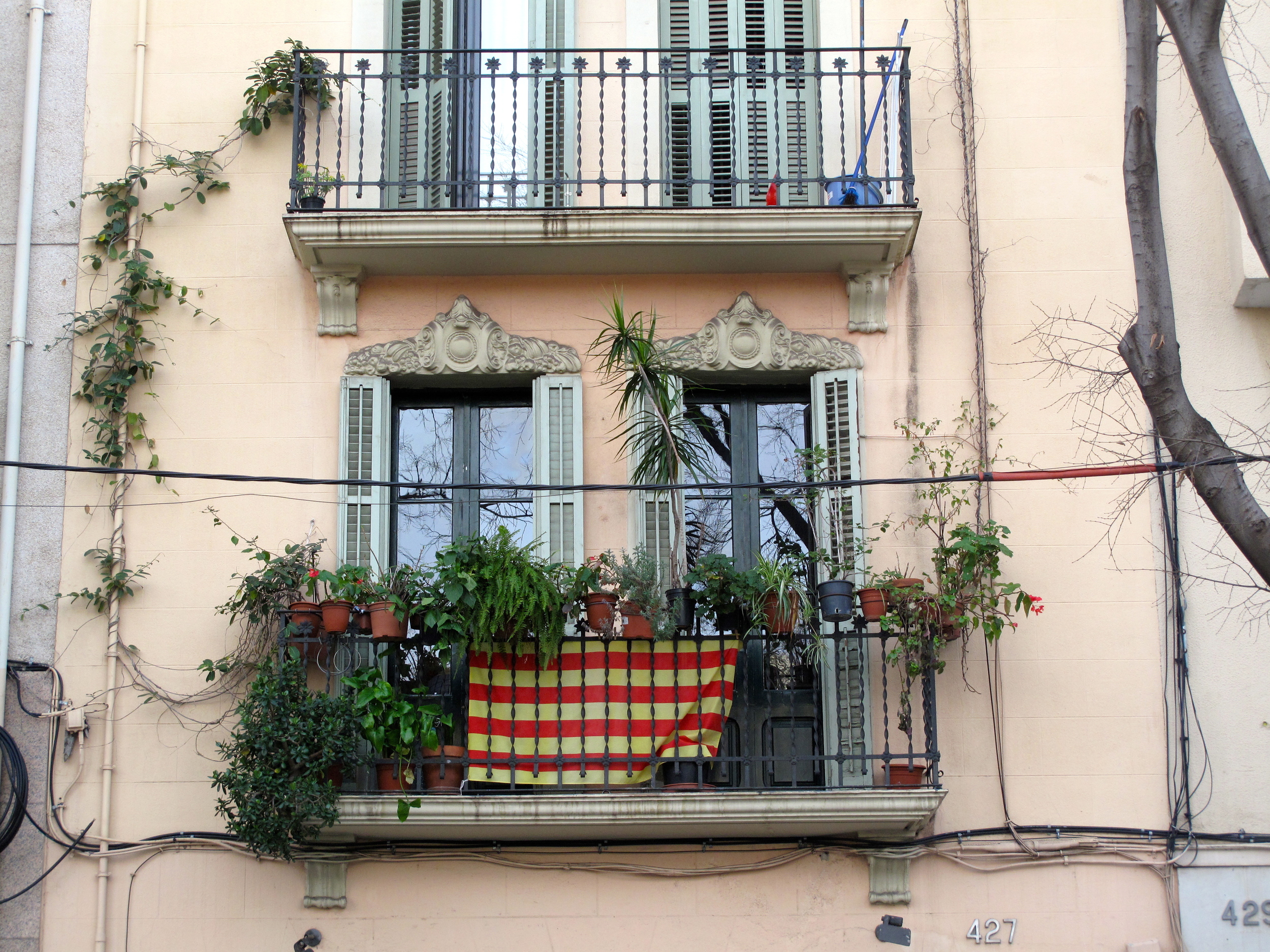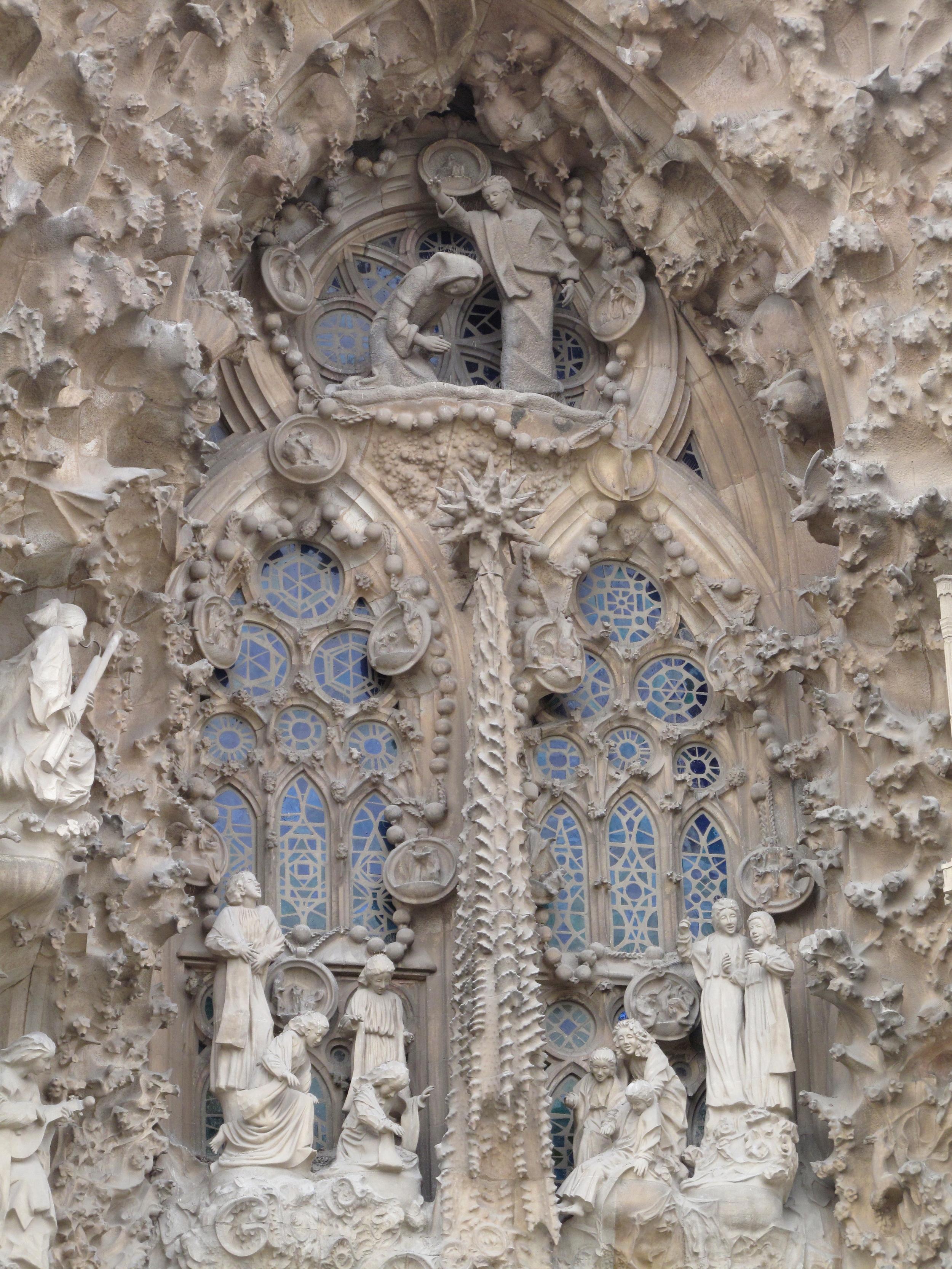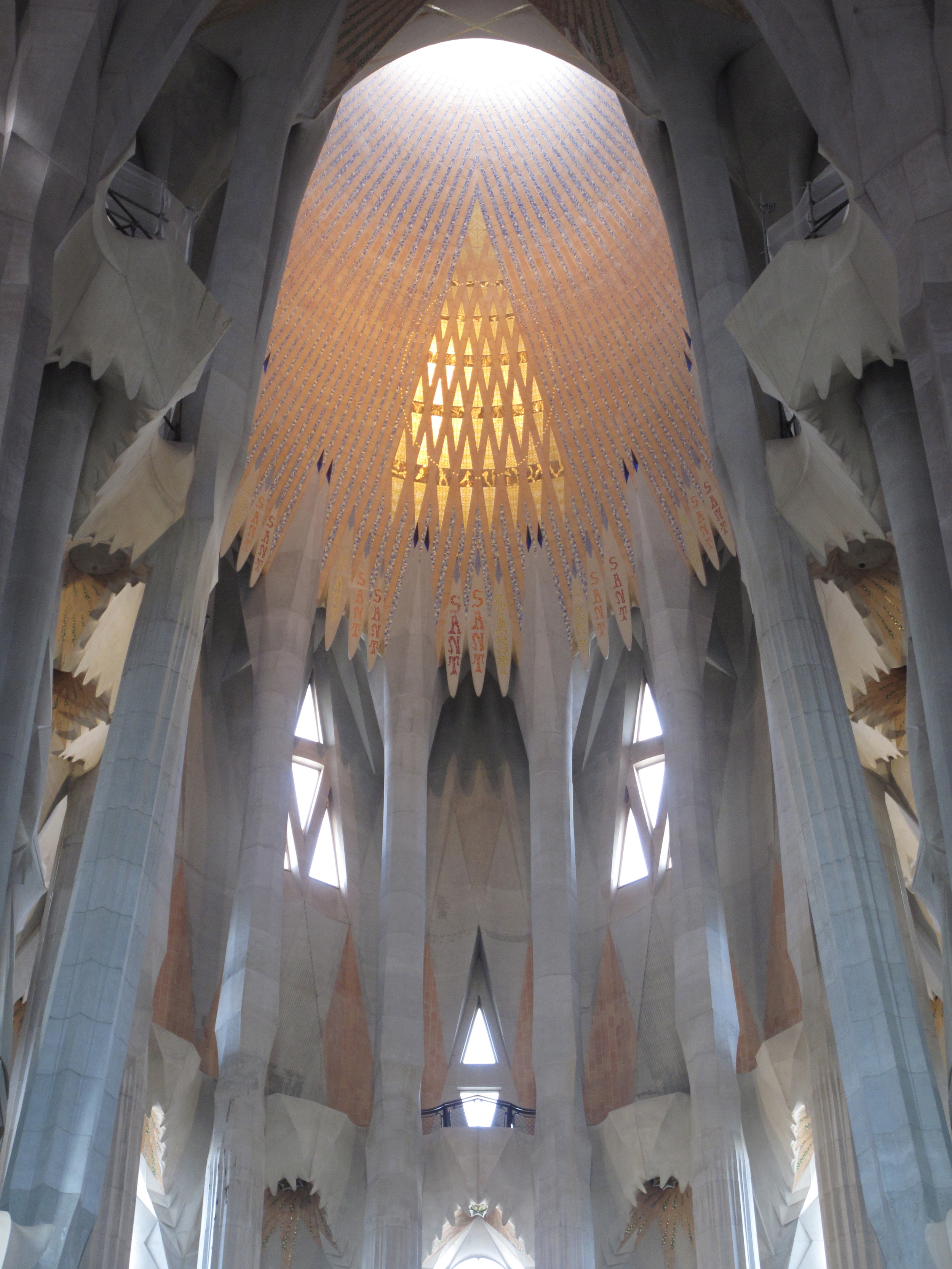ANTONI GAUDÍ
AND ORGANIC ARCHITECTURE
AN ARCHITECTURE WITH A PHILOSOPHY
PICTURE THIS...
It is the late 1800's, and Ildefons Cerdà is planning the new city of Barcelona. But unlike Baron Haussmann, who had to first demolish the city of Paris in order to create his wide avenues, Cerdà has nothing to demolish, instead he is working with an open plain: a blank slate.
Now imagine that, to the North of the city, and a train ride of only a few hours, is Paris and her Grand Expositions; an influence surely felt in Barcelona. There, Art Nouveau is a burgeoning movement, pushing forward modern ideas, abandoning the straight line for the curved one.
A little further to the West is England, and the equally influential Arts and Crafts movement, led by the prominent figures of John Ruskin and William Morris. Ruskin and Morris are currently calling for a revival of the handicrafts, in reaction to that pesky Industrial Revolution which seems to be degrading both production methods and societal values with its infernal factories. As you read the manifestos of Ruskin, you read of medieval values, of guild-like societies filled with skilled artisans, and of objects that can be both beautiful and truly functional.
In fact, all the West seems to be aglow with change, what with the Jugendstil movement in Germany, and Wagner's writings on Total Art; the rise of Liberty Style in Italy; and even the new Glasgow Style in Scotland.
However, to the East and South of Barcelona, picture the shores of the architectural orient; picture the Moorish monuments of Spain, the intricate artifacts of the Mudéjar and Nazarí arts, and the sprawl of the Alhambra. Picture, also, the remnants of a Gothic past, so riddled with trifles between the East and West, that at the very crux of it a new style was born.
And smack-bang in the very middle of this picture is Barcelona. It is 1888 - the year of the first Barcelona World Fair. The city is in midst of a nationalist resurgence - a 'Renaixença' or rebirth of Catalan culture. It is also in the midst of an artistic revolution: Modernisme. While Lluís Domènech i Montaner is trekking through Catalonia in search of a national heritage, recording it in his sketches of Gothic buildings; others are busy planning a modern and cosmopolitan city. The result is the Modernista architectural movement - an intriguing combination of foreign and nationalist movements, of old and new styles.
The times, they are a-changin'.
This was the environment in which Antoni Gaudí began his career. Gaudí himself felt each of these influences keenly, and the results may be seen in many of his works: we may glimpse the curved lines so beloved by Art Nouveau, and the prominence of handicrafts as set out by Ruskin and Morris - as, from the ironworks to the stained glass, to the very furniture inside his buildings, Gaudí considered each detail to be important. In his works we may also see the intersecting influences of Nationalism, Orientalism, and the Gothic Revival, so popular at the time.
Thus, in the beginning, Gaudí's works were a dynamic culmination of Barcelona's past and present.
But then his works began to transcend that Modernista feeling, and Gaudí formed his own style, reminiscent of nature in all her various forms...
BACK TO THE ORIGINS
“Originality consists in returning to the origin.”
So much of Gaudís later works are inspired by nature. By studying the forms of nature - the hyperbolic paraboloid, the hyperboloid, the helicoid and the cone - Gaudi discovered how to translate the language of the earth into architecture. Inspired by tree trunks and human bones, he resolved to make his buildings more stable than those of the Gothic era, which required buttresses to keep them standing. Similarly, his studies on light aided his creation of uniformly lit spaces.
Light achieves maximum harmony at an inclination of 45 degrees, since it resides on objects in a way that is neither horizontal nor vertical. This can be considered medium light, and it offers the most perfect vision of objects and their exquisite nuances. It is the Mediterranean light.
- Antoni Gaudí
Using his discoveries on light, Gaudí could imitate the light of stars and the dappled light that falls through a canopy of leaves. He pushed the envelope even further, creating organic shapes and forms within his buildings - hallways that twisted and turned; façades that appeared like dripping sand or dragons bones; crops of wild mushrooms masquerading as columns and capitals; representations of natural habitats - stone building blocks, sea creatures and sprouting plant kingdoms. The result is a portfolio of buildings that look as if they germinated from a seed in the ground, and were then cultivated by Gaudís green fingers.
...TWO GORGEOUS EXAMPLES...
Of MODERNISTA ARCHITECTURE
1. CASA AMATLLER
Built in a creative neo-medieval style, this building combines historical elements with new building technologies, a perfect example of the Modernista attitudes contemporary to its time.
2. PALAU DE LA MÚSICA CATALANA
Called the most Wagnerian building in Barcelona, the façade follows the influence of the Arts and Crafts movement - showcasing all manner of handicrafts such as stonework, stained glass and mosaic tiling.
SAGRADA FAMILIA
WHERE ART, NATURE AND RELIGION COMBINE
“Those who look for the laws of Nature as a support for their new works collaborate with the creator.”
Sagrada Familia - Gaudís unfinished magnum opus, and an insight into the mind of its creator. This church is the epitome of Gaudí - his devout Catholicism, his obsession with nature, his technical skill, and his previous artistic influences. The outside structure is like a sandcastle, topped with spiral seashells. For the interior, he conceived of not a church, but a forest in which to worship the creator of this earth. The pillars are vast palm trunks, the roof: their spreading leaves. Each trunk has an slight inclination and a double-turn helicoidal shape, as in the branches and trunks of real trees. Remarkably, this fractal structure he envisioned actually allows the immense space to be divided into smaller, self-supported modules - eliminating the need for buttresses. The effect, combined with the light from the coloured windows and starry roof, is one of an ethereal quality. Unlike any other temple I have ever seen, this was almost more suited to the realms of wood elves than to the cities of men.
“The architect of the future will build imitating nature, for it is the most rational, long-lasting and economical of all methods.”
Still, all evidence suggests Gaudí
was most enamoured of the information
he could summon with a naked eye
attuned to fine degrees of variation:
the subtle patterns in a reptile's skin
reborn as phosphorescent mosaic scales
in the outsized lizard fountain at the entrance
to the quirky, razzle dazzle Park Güell
while others are still reeling from the blue-
white to pearl to sea to sky to cobalt-
light-drenched arrow through the Casa Batlló
betraying every other earthly edifice
as, at best, a squandered opportunity,
at worst, an airtight substantiation
of the irreversible insolvency
of our close-fisted imaginations.
Our sin here: the simple-minded reflex
to shut ourselves inside the rectilinear,
a contour wholly alien to nature
whose sole enclosed dwellings
- dovetailed hexagons for wasps and bees -
avail themselves of only obtuse angles.
But a curator friend will interrupt
my sketchy theories about nature
and point me to the rising trunks of trees:
clearly, nature's lavish with right angles,
...for example, that tentacled cathedral's
interior not forest but oasis:
those slim bare trunks are clearly palms -
crowned, in gold leaf, on the ceiling's vault
with fronds I take for disembodied wings
it is a house of God - by angels.
Extracts from 'Love Song to Antoni Gaudí'
- by Jacqueline Osherow

